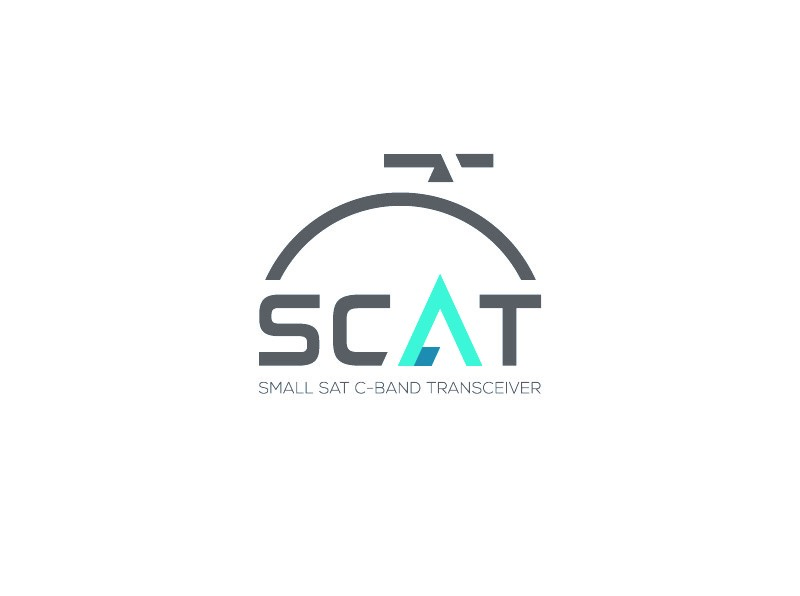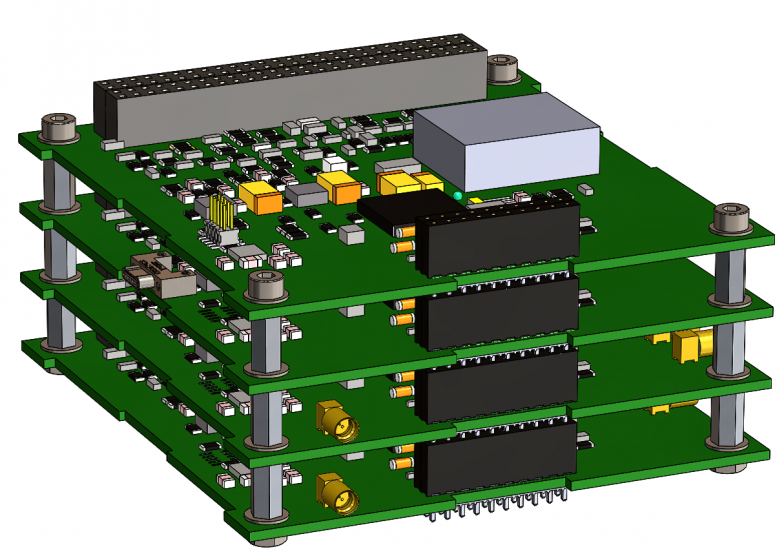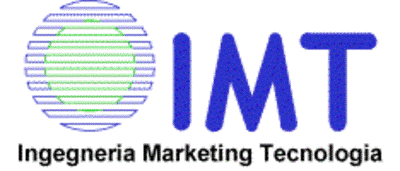
-
StatusOngoing
-
Status date2018-06-26
Since the concept of using small satellite (from very small CubeSat up to nano/micro satellite) in a LEO constellation configuration to provide commercial communication service is largely increasing, the need for the use of non-amateur band arise and, consequently, the necessity or radio regulation over the frequency band of interest become of paramount importance. Therefore, the development of a transceiver able to fulfil communication needs for satellite management and feeder link at C-band is a key activity for the development of this trend.
SCAT (acronym of Small satellite C-bAnd Transceiver) project fits into this scenario and addresses low orbit small satellite mission (600-800km) and platforms above 12U, considering the power availability and TID limitations.

The high performances required for the feeder link in terms of output power and signal bandwidth can lead to critical design of the IF and RF downlink chain. Moreover, one of the main objective is to minimize the power consumption in order to allow the inclusion of the transceiver in small platform: a trade-off between power consumption and reliability of the overall system is thus performed.
Despite the use of small platforms has started the definition of an appropriate regulatory procedures to facilitate the deployment and operation of micro/nanosatellites, a lowering of the radio regulation hurdles for the ones that are going to use the C-Band is not currently foreseen by the international organization.
Worldwide companies are moving in the direction of exploit small platforms for commercial application, especially for the development of mobile satellite service market. In this framework, the SCAT project addresses the potential costumers offering a solution in the C-Band portion of the spectrum (3.4 GHz-7.075 GHz)
For satellite communications, C-band performs better under adverse weather conditions in comparison with higher frequencies (such as K-band) being particularly suitable for small platform.
Moreover SCAT is compatible with worldwide communication protocol, increasing compatibility with a large number of existing GS commercial equipment.
The system concept at the basis of the SCAT development relies on the following key points:
- Modularity: following the different type of platforms, the communication subsystem should consist of modules that could be integrated in a CubeSat structure as well as in a dedicated tray of a nano/micro satellite.
- Scalability: the flexibility of performances of a single module is a key point to develop a communication platform suitable for a large variety of platforms. This requirement affects both the digital and analogue section:
- Digital section: it shall be able to change data rate, modulation, coding scheme and the frequency channel. The setting of the proper link configuration will be reconfigurable since the complete digital processing allows to reconfigure the baseband module.
- RF section: The proposed solution is based on the development of a single analogue transmitter module that can be used for the low data rate downlink of telemetry data or the medium data rate downlink for commercial services.
- Small platform limitations: To fit stringent power requirements, the strategy at the basis of the component selection is based on the re-use of COTS components.
The architecture proposed for SCAT does not foresee only a logical separation between the domains, but also a physical separation in different electronic boards of the components necessary to perform digital signal processing and RF signal processing. This architecture is also compliant with the stringent requirements in terms of available dimension.
The identified viable solution for the design of SCAT consists in the development of four separated electronic boards:
- Power Board (PDB-PWR): includes the power regulator and generator for the whole subsystem;
- Digital Board (PDB-DIG): includes the IF/Baseband signal processing (including ADC and DAC for the IF signal), the digital interface towards the on-board computer and towards the RF boards;
- Transmitter Assembly (TXA): includes the RF front-end, frequency up-converter and amplification stages for the downlink chain (external amplification is required for medium/high data rate link);
- Receiver assembly (RXA): includes the RF front-end, frequency down-converter and amplification stages for the uplink chain;


The project is structured in a single phase and includes all the activities necessary to the development and design of the C-Band Transceiver.
After the analysis of the scenarios offered by future commercial small satellites missions and the definition of specifications of SCAT, the C-Band Transceiver architecture and the numerical algorithms is defined. The first model of the SCAT is realized with the scope to consolidate the design by testing and according to the results, the SCAT Model 2 is designed in details and finally realized. In the end, test activities validate the Model 2.
The project started late 2016: general requirements and reference scenario was agreed during SRR. The SCAT design is now under development, seeking for new flight opportunities: additional functionalities requested from potential customers are considered in this phase.





